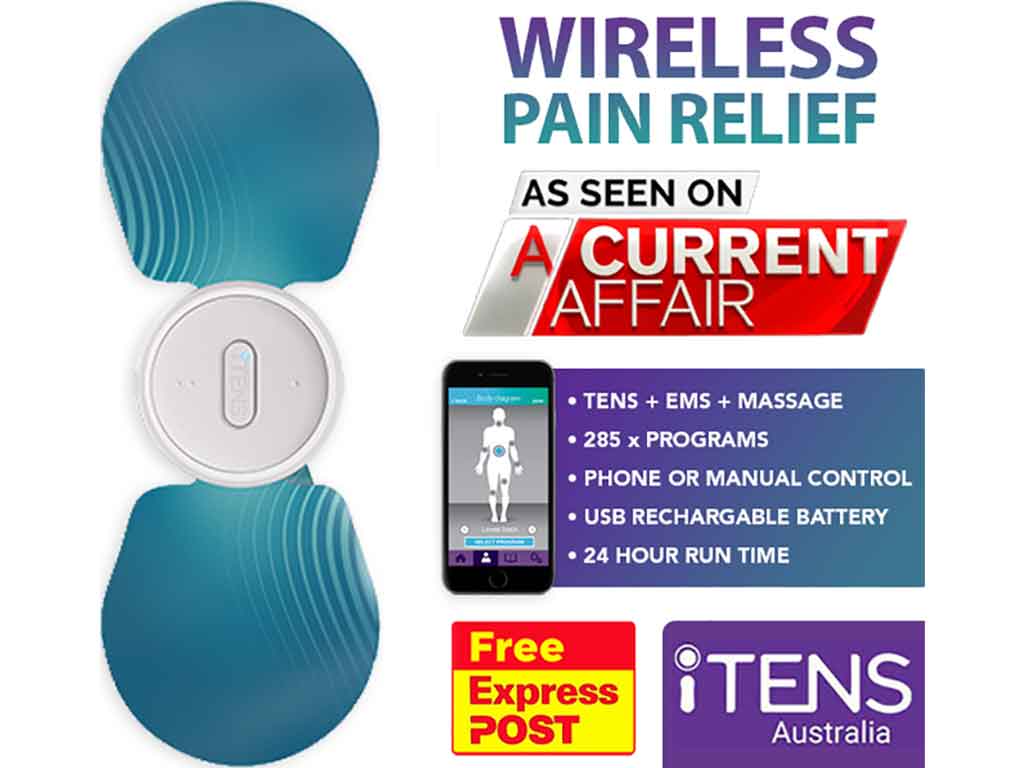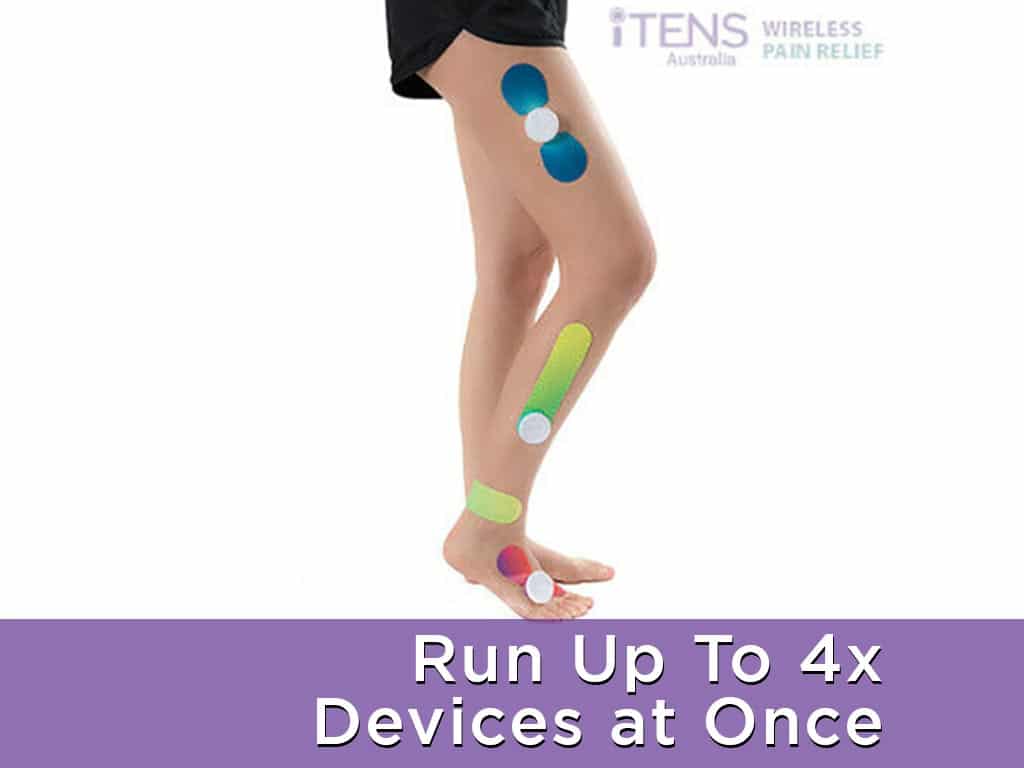
Have you heard of TENS units but are unsure of what they do? Do you suffer from chronic pain that hasn’t responded to other forms of treatment? TENS is short for Transcutaneous Electrical Nerve Stimulation. It is a physical therapy technique for relieving pain by sending electrical signals through electrodes placed on the skin. The electrodes are placed near the targeted area to stimulate the nerves, ligaments, and tendons. Thus, it is an efficient pain relief alternative to pharmaceutical drugs.
TENS therapy is a natural and non-invasive way of reducing pain symptoms from various acute and chronic conditions. In this article, we will talk about how TENS works, the proper way of using the device, and the benefits and conditions it can help treat. We will also discuss the potential risks and safety guidelines. With this knowledge, new users may be able to make the most of their TENS treatment.
What Does a TENS Unit Do
A TENS unit is a battery-operated wearable device placed around the most painful spot. It works by delivering small electrical pulses from the electrodes through the skin. When something is wrong with the body, the nerve cells transmit messages to the brain through the spinal cord. The electrical stimulation works on these nerves to activate the body’s natural mechanisms against pain. Moreover, pain management with TENS is mainly due to the Pain Gate Control Theory and Endorphin Release.
The Pain Gate Control theory suggests that spinal nerves have a gating mechanism controlling the flow of pain signals to the brain. During TENS treatment, the electrical pulses override the nerves to close or block the pain signals from reaching the brain. Furthermore, pain gating works at sensory level stimulation (high-frequency TENS) by setting the unit between 50-130 Hz. As a result, the receptors in the brain receive and process fewer pain messages back to the body.
On the other hand, a TENS unit can induce the release of endorphins. Endorphins are natural chemicals that help inhibit nerve cells from sending pain messages. Consequently, it reduces pain sensations. Because of this, endorphins are referred to as natural painkillers due to their morphine-like properties. Additionally, this function works at motor level stimulation, using low frequency at 10 Hz or less. Likewise, the low steady pulses of TENS improve blood circulation and promote healing.
Conditions Treated
Pain based on health conditions:
- Arthritis
- Bursitis
- Diabetic peripheral neuropathy
- Fibromyalgia
- Gout
- Sciatica
- Tendonitis
- Epicondylitis or tennis elbow
- Plantar Fasciitis
- Muscle sprain and strain
Pain based on body areas:
- Headaches and migraines
- Neck pain
- Shoulder pain
- Backache
- Hand/feet pain
- Abdominal cramps
Others:
- Labour pain
- Fractures
- Post-operative pain

Proper Way to Use a TENS Unit
A TENS unit is a straightforward device that anybody can quickly learn how to use. Portable devices have simple features that are easy and accessible. Firstly, it comprises a handheld controller connected to wired electrode pads. The controller enables manual set-up of the device or access to built-in programs. However, modern units like the iTENS have wireless electrodes with Bluetooth capability. A wireless TENS machine connects to a smartphone app to select or customise the therapy.
To facilitate TENS treatment, position the electrodes to the target area and turn on the device. Next, adjust the TENS intensity. Experts advise starting with the lowest settings to avoid sudden shocks. Then, gradually increase the frequency and intensity as the body accommodates the electrical stimulation. Users may increase the settings to a high level as long as they can handle the strength without causing further harm or discomfort.
Conveniently, most portable TENS units have pre-set modes for easier treatment. Users can simply select from the menu a therapy for a specific condition. For example, you may choose the treatment for osteoarthritis. The pre-set modes allow the users to facilitate the therapy without manually adjusting the settings at each use. In addition, they have fixed parameters, including pulse rate, width, and duration, for safe pain management. Lastly, a session may last between 30 minutes to one hour.
Electrode Pads Guide
- TENS electrodes vary in shape and size.
- Small pads are ideal for small body parts like the wrist, elbow, and ankle. In comparison, large pads are suitable for wide areas like the shoulders and the lower back.
- Position the electrode pads around the pain area and not directly over it.

TENS Unit Effectivity and Safety Tips
A TENS unit is generally safe for individual use. However, there are safety guidelines that should be followed when using them. Before using the device, it is essential to consult your doctor or physical therapist to ensure it is suitable for your condition. Initially, place the electrodes on clean and dry skin. Avoid using TENS on broken or infected skin and numb areas. Likewise, do not place the electrodes over the eyes, mouth, throat, spine, and vital organs.
While using the device, it is normal to feel tingling sensations or light muscle twitching. However, it should not cause the muscles to contract vigorously. If there is muscle contraction, you may check the settings and lower them if it is too high. Moreover, avoid leaving the unit on the skin for too long. If you need more time, give at least a 20-minute break between sessions.
Despite being versatile, TENS therapy is not suitable for some people. These include patients with heart conditions, epilepsy, cancer, and blood clots. You may consult your medical provider first if you have the said conditions. Additionally, avoid using a TENS unit during pregnancy (except in labour) or if you have a pacemaker. This is because a TENS machine may interfere with the power of an electrical implanted device. Lastly, do not use TENS in water or moist environment.
Potential Risks
- Using TENS anywhere in the head and on the front of the neck may cause seizures and lower blood pressure.
- Using TENS on sensitive areas like the eyes and temples may cause tissue damage.
- Some people report burns and develop a rash, redness, or allergic reactions.
Conclusion
TENS therapy is an effective pain reliever that can help manage acute and chronic pain symptoms. It has been proven to reduce muscle tension, stiffness, spasm, and inflammation in targeted areas of the body. Furthermore, a TENS unit also improves circulation which helps in the faster healing of damaged tissues. It involves using varying frequency and intensity levels to activate the pain-gating mechanisms and release endorphins. Therefore, many people use it to minimise their intake of medication.
In conclusion, TENS is a non-invasive form of pain relief that does not require surgery or injections. A TENS machine is also straightforward to use. After positioning the electrodes on the pain site, switch on the device and select from the pre-set modes to begin the therapy. Advanced users may experiment by trying different frequency levels manually. However, observing the safety measures is vital to avoid possible risks.




















